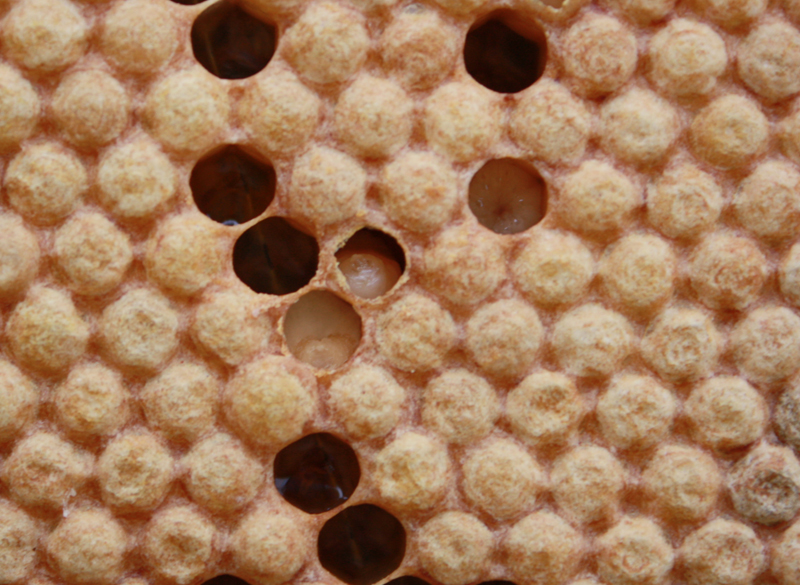-
Administrator

-

I'm new to all this, so I'll ask a question:
Are you refering to the larvae that are not lying nice and flat in the cells? in your 3rd pic its the larvae in the centre of the 4the row of cells from the top. In the 4th pic its the cell nearest the centre of the pic and finally its the two larvae next to each other????
-
Administrator


Yup, TNA, those are the dodgy cells. They *might* have chalkbrood as that fungal disease causes larvae to adopt unusual positions (sometimes) but I'm on full paranoia alert at the moment over European foulbrood. That one causes larvae to twist, melt down, wax-like, or go mushy, brown and smelly if sealed over before dying. The first is very common, the second is a serious disease that will get worse over time. It is 'notifiable', and as I have suspicions I've just told the inspectors about my concerns. It is the law.
-

it could be inbreeding... there are alot of holes in the frame on the first picture. It looks like the bees have reopened up the cells after they were closed - so they are cleaning out cells they dont like. Deformed shape or pupating? Hope its not EFB / AFB / Chalkbrood. Will keep my fingers crossed for you! Keep us updated !
-

I'm no expert but a few of the larvae are not lying in the normal C shape. It could still be the early stages of chalk brood. Is there any other cells with chalk brood in the hive? The weather has not been good so if there is no nectar going in chalk brood will show up more but usually sorts itself with a nectar flow or with feeding. I would not say it was inbreeding as a lot of the empty cells are next to where the wire is in the foundation Bees tend not to use these cells (you can see the wire pattern in the first picture)
-
Administrator


I have far too much chalkbrood in my hives. Now that we are getting into breeding maybe I can do something about that. More frequent comb replacement might help too. I too am unconvinced that inbreeding has much to do with it - the brood pattern in that hive is a lot better than some of the others! I'll let you know what the real experts say. Perhaps I'm putting too much pressure on them with all this exposure, if so I apologise.
-

Right enough Jim there are alot of of empty cell besides the ones along where the wire is. There are an awful lot besides them aswell though- I count more than 50.
Thats an awful lot.
-

Hi Gavin,
I would try feeding first to see if the chalk brood clears up. If not then you may have to re-queen. Is the ventilation good? sometimes poor ventilation and dampness can give you problems. It will be interesting in what the experts say. Do they use a kit to test?
-

Just had a thought. The pictures show frames with no bees and only a few cells that the larvae look strange. How many beekeepers actually shake off their bees and examine the brood.
-
Administrator


Yes, there is a lateral flow strip test which they carry for uncertain cases. There is knack to using them, particularly the choice of the right kind of larva. Too old and the original pathogenic bacteria have been replaced. I suppose that it is the lack of proper melting down that gives me hope this is not EFB.
The site isn't damp and I can't recall whether that colony has an OMF or a solid floor. That frame doesn't look too bad for chalkbrood compared to some (just like the brood pattern!). The colony in the other thread, the one I'm fairly sure has EFB, has a dreadful amount of chalkbrood and a terrible brood pattern. Varroa is contributing in that one too.
 Posting Permissions
Posting Permissions
- You may not post new threads
- You may not post replies
- You may not post attachments
- You may not edit your posts
-
Forum Rules










 Reply With Quote
Reply With Quote
Bookmarks